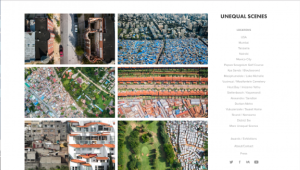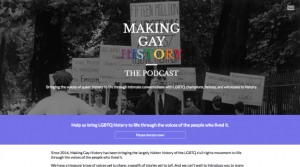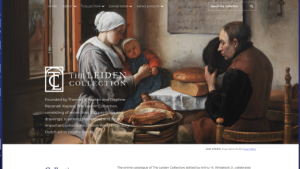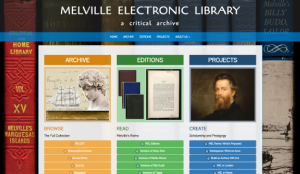General Interest
Back to Top
|
 |
|
Unequal Scenes
|
Social studies |
|
In Unequal Scenes, American photographer Johnny Miller uses a drone to capture remarkable aerial images highlighting the dramatic and often startling disparities between rich and poor neighborhoods existing side by side. Miller began this project in 2016 in South Africa, inspired by his time there as an anthropology student. As of this writing, Unequal Scenes has expanded to include images from Mumbai, Nairobi, Mexico City, Tanzania, and the United States. In addition to Miller's photographs, which are organized by location and feature scenes such as one in Mumbai where luxurious high-rise apartment buildings are immediately adjacent to a sprawling, chaotic slum, Unequal Scenes also includes Miller's written explanations giving context to what the images show. Unequal Scenes has received numerous awards, such as first place in the Nature and Environment category at the 2017 Istanbul Photo Awards, and it has also been featured in photography exhibitions in Johannesburg, London, Sydney, and Santa Fe, among other cities. [JDC] |
|





|
|
 |
|
 |
|
Seeing Science: Photography, Science and Visual Culture
|
Arts |
|
Seeing Science: Photography, Science and Visual Culture offers readers an exploration of "the central role photographic images play in [...] furthering science and how photographic images made in and about the sciences impact public opinion, policy and funding, science education, as well as visual and popular culture." Here, readers will find a wealth of content, including a timeline detailing the development of photography, a collection of short essays on topics such as "Science Photography and the Art Museum," and a gallery of photographs grouped into science themes (e.g. artificial biospheres and celebrity scientists.) Created as a year-long project in 2016-2017, Seeing Science was produced and curated by Marvin Heiferman, Visiting Senior Research Scholar at the University of Maryland-Baltimore County (UMBC), with art direction by Kelley Bell, Associate Professor of Graphic Design at UMBC. [JDC] |
|





|
|
 |
|
Edinburgh's Transport Story
|
Social studies |
|
Readers interested in data visualizations and the environmental impacts of urban transportation may appreciate Edinburgh's Transport Story, a story map that explores how people travel on their daily commutes in the Edinburgh region, which has the second lowest rate of car commutes in the UK after London. This project presents viewers with five interactive maps (created using census data) showing where people in the Edinburgh region use different transportation methods for their daily commutes, including walking, bicycling, taking public transportation, and driving. Accompanied by data figures and photographs, these maps show that while "sustainable" travel methods (used here to collectively refer to public transport, cycling, and walking) make up the majority of commuters in the Edinburgh metropolitan area, the rate of car commutes dramatically increases to dominate in areas further away from Edinburgh. Edinburgh's Transport Story was created by Patrick Miner, a graduate student in human geography at the University of Edinburgh where he researches public transportation and city planning. [JDC] |
|





|
|
 |
|
The Nastiest Feud in Science
|
Science |
|
A catastrophic asteroid impact is the widely accepted scientific explanation for the dinosaurs' extinction, but this isn't the only idea under consideration. In "The Nastiest Feud in Science," published in the September 2018 issue of The Atlantic, Bianca Bosker tells the story of Gerta Keller, Professor of Paleontology and Geology at Princeton University. For decades, Keller has argued that "the mass extinction was caused not by a wrong-place-wrong-time asteroid collision but by a series of colossal volcanic eruptions in a part of western India known as the Deccan Traps," an assertion that put Keller at the center of a long-running and frequently vicious scientific controversy. Bosker's long-form article unpacks this raucous controversy, highlighting the infighting among scientific disciplines, in particular between followers of Luis Alvarez, the physicist who first proposed the asteroid theory, and adherents to the Deccan volcano theory, such as Keller. A fascinating read, "The Nastiest Feud in Science" is accompanied by multiple images, along with a short video. [JDC] |
|





|
|
 |
|
Making Gay History
|
Social studies |
|
Making Gay History is a podcast featuring rare interviews with figures from the LGBTQ civil rights movement. These interviews come from the archives of creator and host Eric Marcus, who won the Stonewall Book Award for his 1992 oral history book Making History: The Struggle for Gay and Lesbian Equal Rights, 1945 to 1990 (revised and updated in 2002 as Making Gay History). Here, visitors will find personal stories from the well-known, such as Ellen DeGeneres, and the relatively obscure, such as Wendell Sayers, who was "the first black lawyer to work for Colorado's Attorney General, and risked everything to join a gay discussion group." Each episode is accompanied by explanatory notes written by Marcus, links to other resources, a full transcript, and (often) photographs. Launched in 2016 and currently in its third season, Making Gay History can be downloaded on iTunes, Stitcher, and other platforms. [JDC] |
|





|
|
 |
|
The Leiden Collection
|
Arts |
|
Fans of art from the Dutch Golden Age will want to check out The Leiden Collection, an online catalog of one of "the largest and most important collections of seventeenth-century Dutch art in private hands." Readers will find a well-organized and easy-to-navigate database of more than 175 paintings and drawings by artists such as Rembrandt van Rijn, Gabriel Metsu, and Peter Paul Rubens. Each artwork is accompanied by a detailed explanatory entry with bibliographic references, the piece's exhibition history and provenance, and a technical summary of its conservation history. This beautifully designed resource also features scholarly essays, a glossary of art terms, a substantial collection of videos, and a helpful user guide for its online catalog. The Leiden Collection was edited by Arthur K. Wheelock, Jr., who recently retired from his position as Curator of Northern Baroque Paintings at the National Gallery of Art. [JDC] |
|





|
|
 |
|
Song of the Vine: A History of Wine
|
Social studies |
|
Although the physical Song of the Vine exhibition hung in the Division of Rare and Manuscript Collections at the Carl A. Kroch Library at Cornell University about ten years ago, the online version is still available for visitors today. Materials on display are selected from the Eastern Wine and Grape Archive, which documents the history of wine in the Finger Lakes region and the development of the wine industry in the U.S. For example, the section entitled "Wine Comes To America" contains items such as images from Agoston Haraszthy's Grape Culture, Wines, and Wine-making. With Notes Upon Agriculture and Horticulture, published in New York in 1862. Haraszthy, a wine enthusiast, is credited with introducing around 300 different grape varieties to the United States. Also in this exhibition section is a reproduction from "Thomas Jefferson on Wine," and a patent for the Einset Seedless Grape, April 26, 1988. Other sections of Song of the Vine cover practical aspects of winemaking, the temperance movement and prohibition, and grape varieties. [DS] |
|





|
|

























